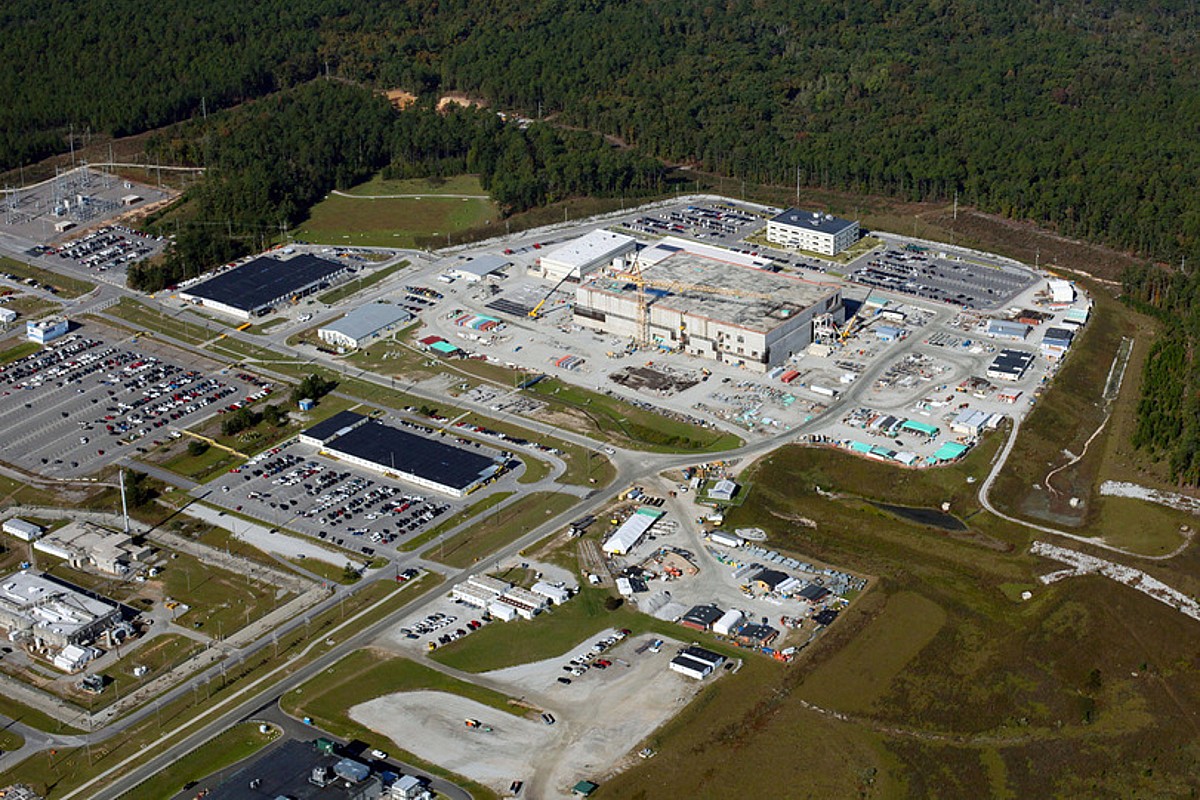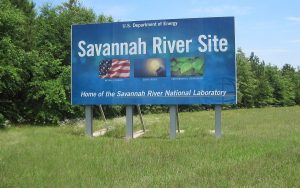
By Skyler Baldwin, special to Statehouse Report | A plan to restart a defunct South Carolina nuclear facility with a new mission has safety advocates worried about tons of new nuclear waste in an area of the state with a checkered radioactivity record.
“The essential problem with the work at the Savannah River Site (SRS) is there have been a number of newfangled ideas to either downgrade or reuse plutonium or other nuclear byproducts,” said Tonya Bonitatibus, executive director of Savannah Riverkeeper, a nonprofit advocacy group. “Often, that just means we bring in more waste that is indefinitely stored in South Carolina and often not used even for the purpose it was brought in for.”
The U.S. Department of Energy (DOE)’s new budget includes a request for $603 million toward the production of plutonium pits, a key component in nuclear warheads, at SRS. Nearly all pits currently in the U.S. stockpile were produced from 1978 to 1989 because the U.S. had only one active site for decades to produce new pits. The recent funding request marks a 37 percent increase from 2020, which moves the department closer to its goal of restoring pit production and producing 50 pits per year by 2030.
Under the project plan, SRS would repurpose its unfinished Mixed Oxide (MOX) Fuel Fabrication Facility as a proposed Savannah River Plutonium Processing Facility (SRPPF).
“Repurposing this unfinished facility would allow NNSA [National Nuclear Security Administration] to make use of an existing seismically-qualified structure, with numerous supporting facilities, including office, assembly and fabrication space; construction facilities; and existing SRS services and infrastructure, such as security, fire protection and emergency response,” a 2020 SRS report said.
But South Carolina’s troubled history with nuclear production and the costs associated with it are leaving many skeptical.
“I worked against the MOX project for over 20 years before it was terminated because I knew it was a bad idea and a waste of money,” said Tom Clements, director of watchdog advocacy group SRS Watch. “The plutonium pit project is just what the MOX project has metamorphosed into.
“They’re jumping into this pit project without having learned the lesson from the MOX debacle, and the people pushing this — I think they’re going to get burned again.”
Lots of waste predicted
Clements has been monitoringSRS or working in its area for more than 40 years with various advocacy organizations, including Friends of the Earth off and on since 2008.

“I estimate the pit project would bring in about 7.5 metric tons of plutonium, and most of that would go back out in the form of a pit, but there’s plutonium waste, transuranic waste, low-level radioactive waste and low-level mixed radioactive waste,” Clements told Statehouse Report. “There’s a large volume of nuclear waste that would be created, and some of it would be dumped in commercial facilities, but the preferred option is dumping it in on-site trenches.
“The last thing we need here in South Carolina is more nuclear waste,” he said.
But according to a 2019 report from the S.C. Department of Health and Environmental Control’s Environmental Surveillance Oversight Program, radioactive waste associated with the Savannah River Site is well within acceptable levels.
But critics said those levels would surely increase with new nuclear production, and nuclear waste and materials would also need to be moved from site to site, as the project spans from South Carolina to Nevada using shipping trucks. Fortunately, that means the risk of hazardous material spilling into Palmetto State waterways due to this project is minimal, Clements said, as nuclear materials wouldn’t be shipped aboard waterbound vessels.
The plan isn’t without risk. Waste can leak from ground sites into waterways, or seep into groundwater below, an until-recently ongoing issue, according to statewide reports between 1971 and 2019.
“Plutonium pit production … would result in a large amount of plutonium being brought into the site for processing and would yield various types of nuclear waste, threatening groundwater and the Savannah River,” grassroots environmental organization Sierra Club said in a statement June 3. “If the plans to produce plutonium pits fails or succeeds, South Carolina would be burdened with a significant radioactive waste problem. No schedule to date has been presented for the removal of this material in the form of pits or associated waste streams.”
But those behind the drafted proposal believe the project is worth the chance.
“The National Nuclear Security Administration must implement a strategy to provide the enduring capability and capacity to produce no less than 80 war reserve plutonium pits per year,” the SRS report read. “This approach would provide an effective, responsive, and resilient nuclear weapons infrastructure with the flexibility to adapt to shifting requirements and counter future threats.”
Estimated costs continue to climb
Perhaps the greatest point of contention about the new project is its economic implications. The cost of the construction of the facility alone is estimated to be $11.1 billion, and when the rest of the needed infrastructure is taken into consideration, that cost soars to $18 billion, according to DOE estimates and a Sierra Club report.
This estimate is already more than double the original projections shared in 2018 when discussions for the project first began. Official costs and schedule baselines won’t be available until the design is at least 90 percent complete, according to Sierra Club, and many expect the final cost to be much higher than even current estimates.
But, the project anticipates the need for 1,800 highly-skilled personnel to maintain production, a significant job creation as the state continues to recover from the coronavirus pandemic.
What’s next
Ultimate decisions will be made by authorization of the project and appropriation of funds in Congress.
“We are definitely encouraging people to write members of Congress, including the S.C. delegation to oppose this project,” Clements said. “All of them are pretty much in favor of it — even [U.S. Rep. James] Clyburn’s office likes the jobs it would produce.”
The S.C. Environmental Law Project is likely to file a lawsuit on behalf of environmental advocacy groups against the proposal, citing national environmental policy acts that the project would reportedly butt against if current designs were not amended. Clements’ group is likely to sign onto the lawsuit, he said.
Skyler Baldwin is a staff reporter at the Charleston City Paper. Have a comment? Send to: feedback@statehousereport.com.
- Have a comment? Send to feedback@statehousereport.com



Pingback: Trouble for Nuclear War Planners: SRS Plutonium Bomb Plant (PBP) Cost Blasts Through the Roof: $11 Billion…$14 Billion…$18 Billion?!
If you could fill your car gas tank with water from your garden hose and drive your car they would find issues with that. It’s a never ending cycle.